Johannesburg, the largest city in South Africa, boasts a diverse range of bird species that inhabit its urban sprawl. From the iconic African Fish Eagle to the noisy Hadeda Ibis, Johannesburg is home to a staggering 300 bird species.
The city’s gardens, nature reserves, and parks provide ample nesting and feeding grounds for these feathered creatures, making it a popular destination for birdwatching enthusiasts.
Whether you are a seasoned birder or just starting, Johannesburg offers a unique opportunity to experience the beauty and diversity of African birdlife within an urban landscape.
In this article, we will take a closer look at some of Johannesburg’s most common and striking bird species.
1. Laughing Dove
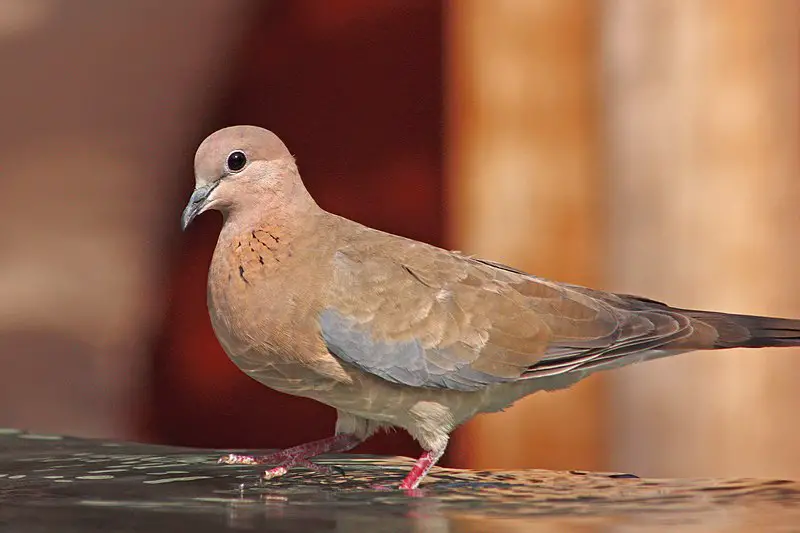
The Laughing Dove is a small and long-tailed pigeon found in dry, scrubby or semi-desert habitats. These birds are native to Africa, the Middle East, South Asia and Western Australia where they were released from Perth Zoo in 1898.
A unique feature of these doves is their call which sounds like low laughter – hence its name.
They form pairs when feeding on the ground, often near water sources such as pools or riverbanks. The diet of this bird consists mainly of seeds with some invertebrates also taking up part of it.
This species has adapted well to different environments due to its ability to find food resources easily even during times when other foods may be scarce.Scientific classification:
| Kingdom | Animalia |
| Phylum | Chordata |
| Class | Aves |
| Order | Columbiformes |
| Family | Columbidae |
| Genus | Spilopelia |
| Species | S. senegalensis |
Also Featured In: Egyptian Birds, Most Common Western Australia Birds
2. Southern Red Bishop
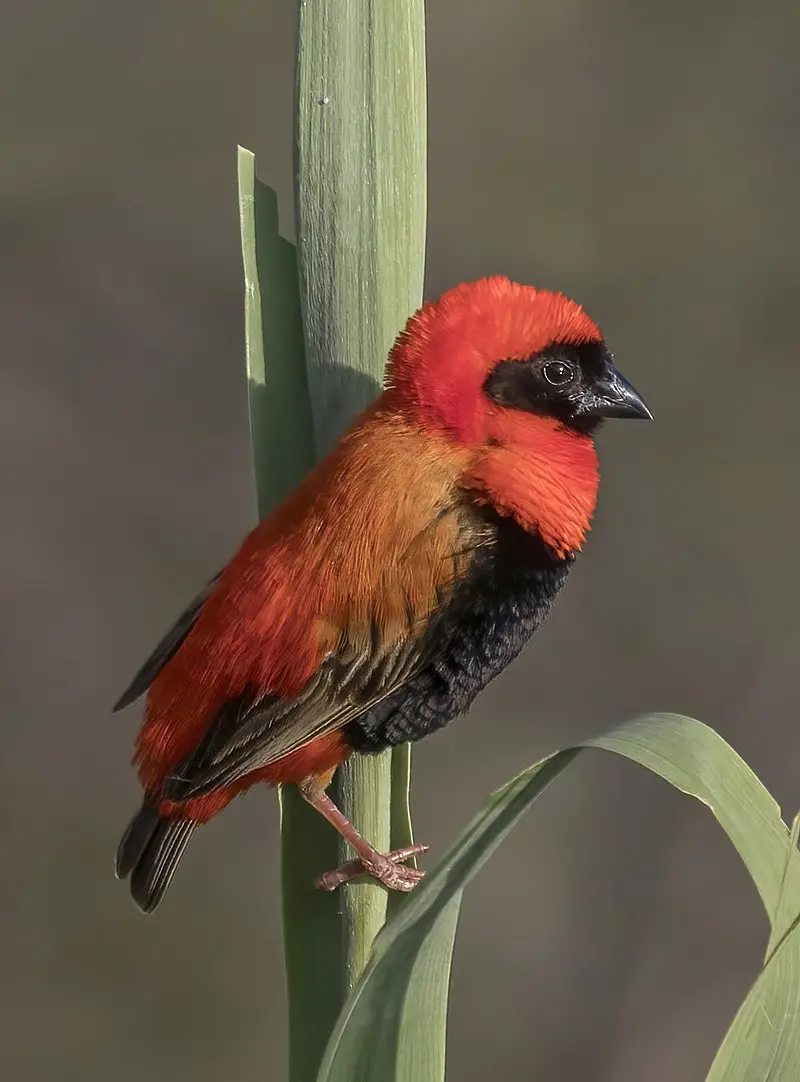
The Southern Red Bishop, also known as the red bishop, is a small passerine bird that can be found in wetlands and grasslands south of the equator. It belongs to the Ploceidae family and its genus Euplectes.
This species has bright red plumage with black wings, tail feathers, face mask and bill on males while females are mostly brown in colour with faint streaks across their breast region.
The male birds have yellow eyes while female’s eye color ranges from light orange to deep reddish-brown tones depending on age or season.
They feed mainly on seeds but will occasionally eat insects such as termites and beetles when they’re available too.
These birds form flocks during nonbreeding periods which makes them easier to spot since you’ll likely see more than one at once.Scientific classification:
| Kingdom | Animalia |
| Phylum | Chordata |
| Class | Aves |
| Order | Passeriformes |
| Family | Ploceidae |
| Genus | Euplectes |
| Species | E. orix |
Also Featured In: Birds of Tanzania,
3. Grey Go-Away-Bird
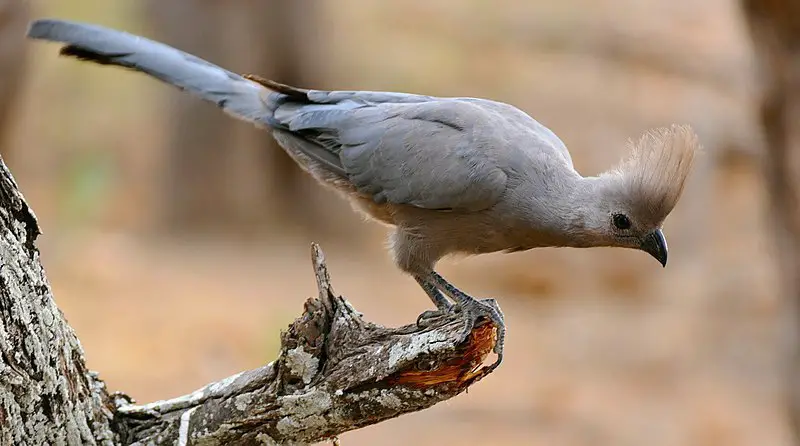
The Grey Go-Away-Bird is a beautiful and vibrant bird native to the southern Afrotropics. It has grey feathers on its body with white edging, making it distinct from other birds in its area.
These bold birds can be seen foraging for food high up in trees or dust bathing on the ground in groups or parties.
When disturbed they make their presence known by producing loud cackling calls that sound like “go away”.
This species of bird prefers arid to moist open woodlands and thorn savanna near surface water which provides them with plenty of opportunities to search for food such as insects and fruits.
All in all, the Grey Go-Away-Bird is an interesting member of the avian community.Scientific classification:
| Kingdom | Animalia |
| Phylum | Chordata |
| Class | Aves |
| Order | Musophagiformes |
| Family | Musophagidae |
| Genus | Corythaixoides |
| Species | C. concolor |
Also Featured In: Birds of South African, African Birds
4. Red-Chested Cuckoo
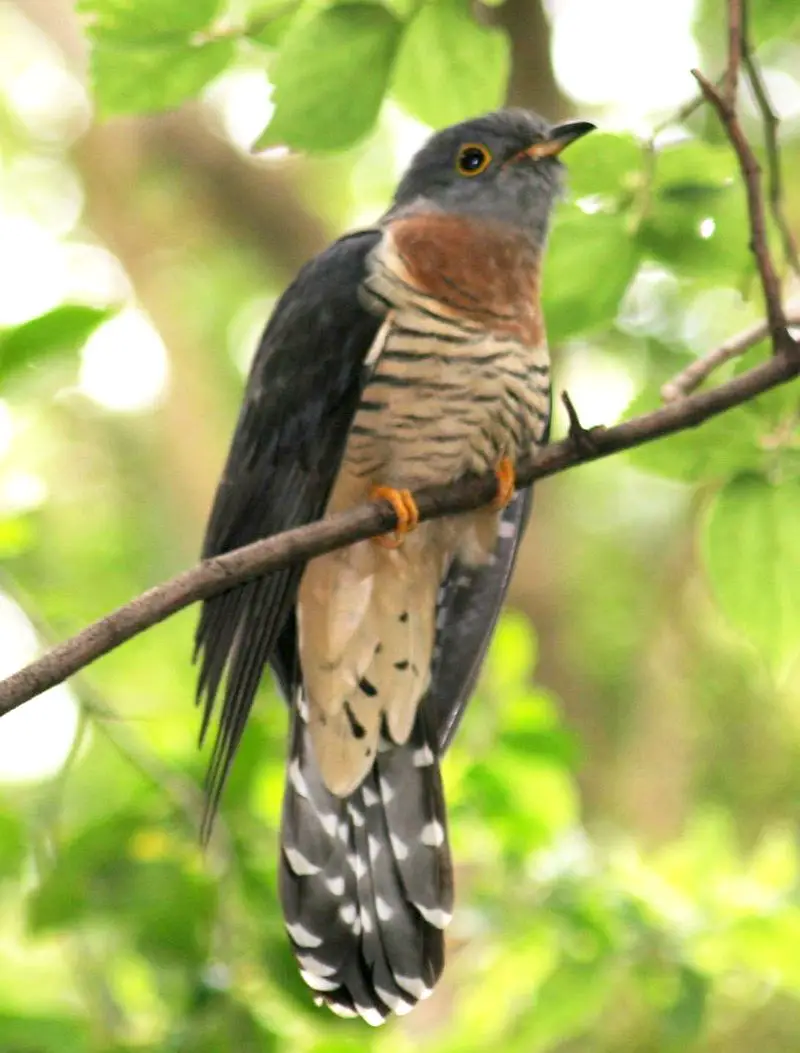
The red-chested cuckoo is a medium size bird, measuring at around 31 cm. It has slate grey upper parts and pale grey throat and sides of head.
The tail has dark grey tip with white spots on it that provide an extra decorative feature to the already beautiful bird.
Its call in Afrikaans is ‘Piet-my-vrou’, which adds to its charm as one can easily relate this wonderful sound to the majestic creature itself.
Inhabiting Africa south of the Sahara, these birds are generally found near woodlands areas or tropical rainforests where they feed upon insects such as caterpillars, grasshoppers and wild fruits like berries for sustenance.
Their nesting habits involve laying eggs in other species’ nests usually after having eaten up some of their host’s eggs first. This unique behavior makes them fascinating creatures indeed.Scientific classification:
| Kingdom | Animalia |
| Phylum | Chordata |
| Class | Aves |
| Order | Cuculiformes |
| Family | Cuculidae |
| Genus | Cuculus |
| Species | C. solitarius |
5. Sentinel Rock Thrush
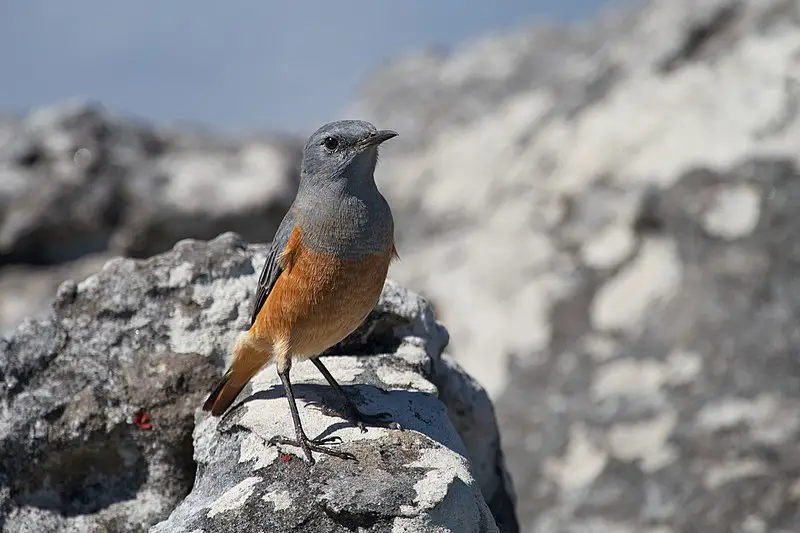
The sentinel rock thrush is a species of bird found in Lesotho, South Africa and Swaziland.
It resides mainly in high-altitude grassland habitats where it feeds on insects and other small invertebrates.
Its plumage consists of shades of grey and brown with some reddish highlights along its wings and tail feathers.
As part of the Muscicapidae family, these birds also have distinctive white patches around their eyes.
Sentinel rock thrushes are known to migrate during certain times throughout the year but they stay within their home range all year round while avoiding human disturbance as much as possible.
These birds make great avian indicators for conservationists due to their sensitivity towards changing environmental conditions; when a habitat becomes threatened or degraded, they will often be one of the first resident species to leave that location entirely.Scientific classification:
| Kingdom | Animalia |
| Phylum | Chordata |
| Class | Aves |
| Order | Passeriformes |
| Family | Muscicapidae |
| Genus | Monticola |
| Species | M. explorator |
Also Featured In: Lesotho birds,
6. African Wattled Lapwing
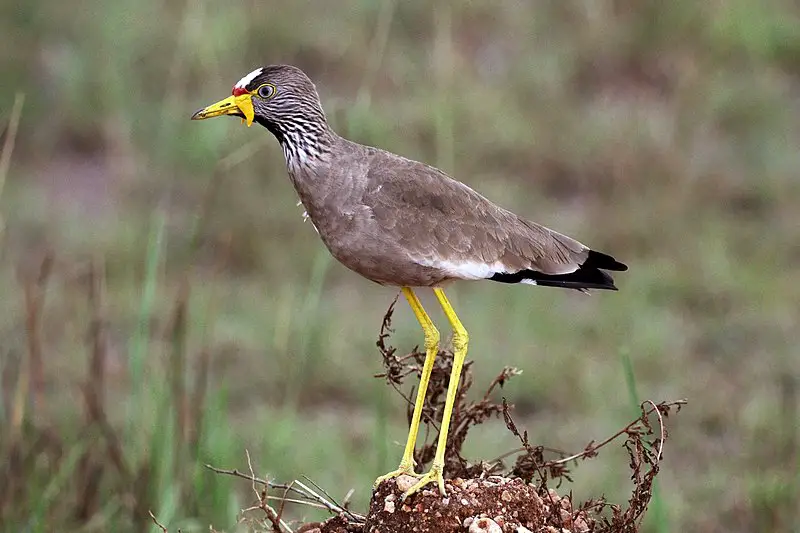
The African wattled lapwing, also known as Senegal wattled plover, is a remarkable bird species found mostly in sub-Saharan Africa. It’s a large wader that doesn’t migrate much except during seasonal movements.
These lapwings are distinctively conspicuous and hard to miss with their unmistakable features.
They have a brown coloration and a black crown above their head. One of their unique features is the black facial wattles, which are large and fleshy.
African wattled lapwings are known to breed in open habitats outside of the rainforests, and they are dominant in their territories.
Their diet mostly consists of insects and other small animals, and they are known to care for their young ones until they can fly.
These endearing birds are a sight to see, but their populations are under threat due to human activities like habitat destruction and overexploitation.Scientific classification:
| Kingdom | Animalia |
| Phylum | Chordata |
| Class | Aves |
| Order | Charadriiformes |
| Family | Charadriidae |
| Genus | Vanellus |
| Species | V. senegallus |
Also Featured In: Birds You’ll Find in Kenya Safari, Birds that Live in lake Mburo National Park
7. Hadada Ibis
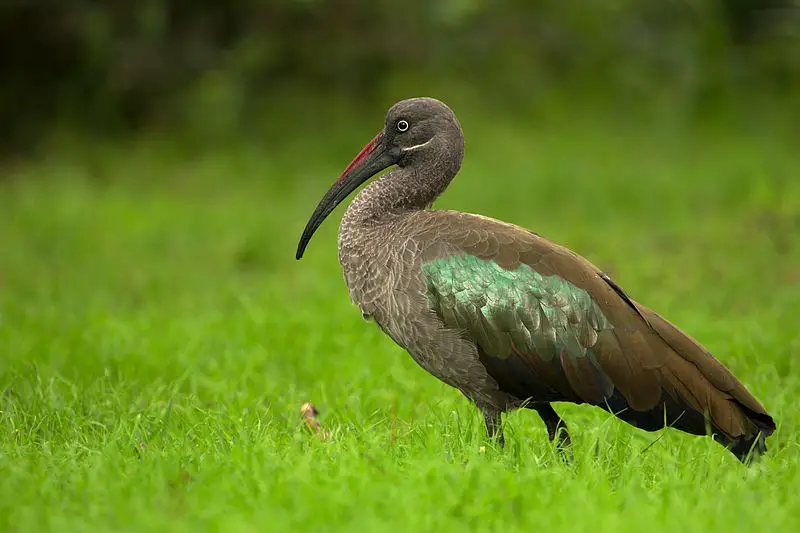
The Hadada ibis, native to Sub-Saharan Africa, is a loud and distinctive bird known for its three to four note calls during flight.
Often found near wetlands, they are adaptable and can also forage in cultivated land and gardens, often in close proximity to humans.
Unlike some other ibises, they are not entirely dependent on water. The Hadada ibis is named after the sound it makes and can often be heard in the early mornings and evenings as they fly out or return to their roosts.
With their sleek feathers and elongated beaks, they are a unique and interesting addition to the diverse wildlife of Africa.Scientific classification:
| Kingdom | Animalia |
| Phylum | Chordata |
| Class | Aves |
| Order | Pelecaniformes |
| Family | Threskiornithidae |
| Genus | Bostrychia |
| Species | B. hagedash |
Also Featured In: Birds of KwaZulu-Natal, Fuerteventura Island Birds You Need to See
8. Cape Weaver
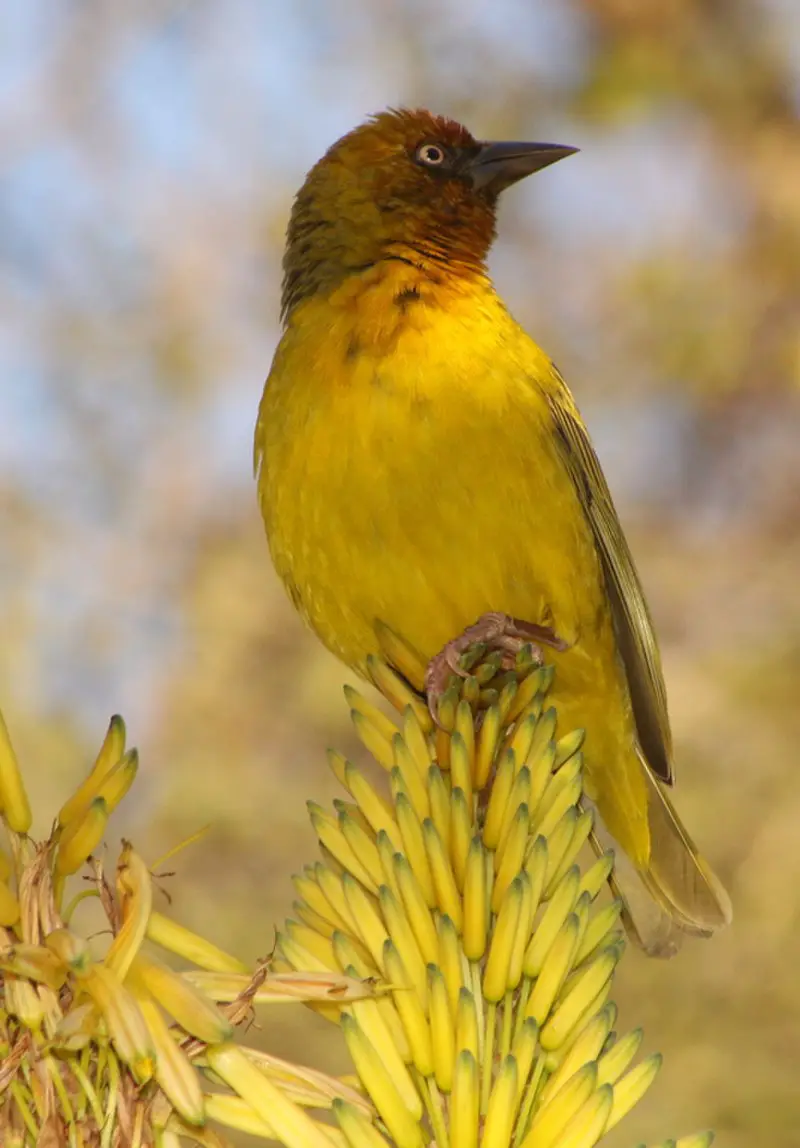
The Cape weaver is a bird species found in southern Africa. It belongs to the weaver family, Ploceidae.
The French zoologist Mathurin Jacques Brisson described it in 1760, based on a specimen collected from the Cape of Good Hope.
The Cape weaver is also known as Le carouge du Cap de Bonne Espérance in French and Xanthornus Capitis Bonae Spei in Latin.
This bird is indigenous to the region and can be identified by its unique physical features and behavior.
As a weaver, the Cape weaver is known for its complex and intricate nests, which it builds from grass and reed.
Overall, the Cape weaver is an interesting and striking species of bird due to its appearance and fascinating nesting habits.Scientific classification:
| Kingdom | Animalia |
| Phylum | Chordata |
| Class | Aves |
| Order | Passeriformes |
| Family | Ploceidae |
| Genus | Ploceus |
| Species | P. capensis |
9. Southern Boubou
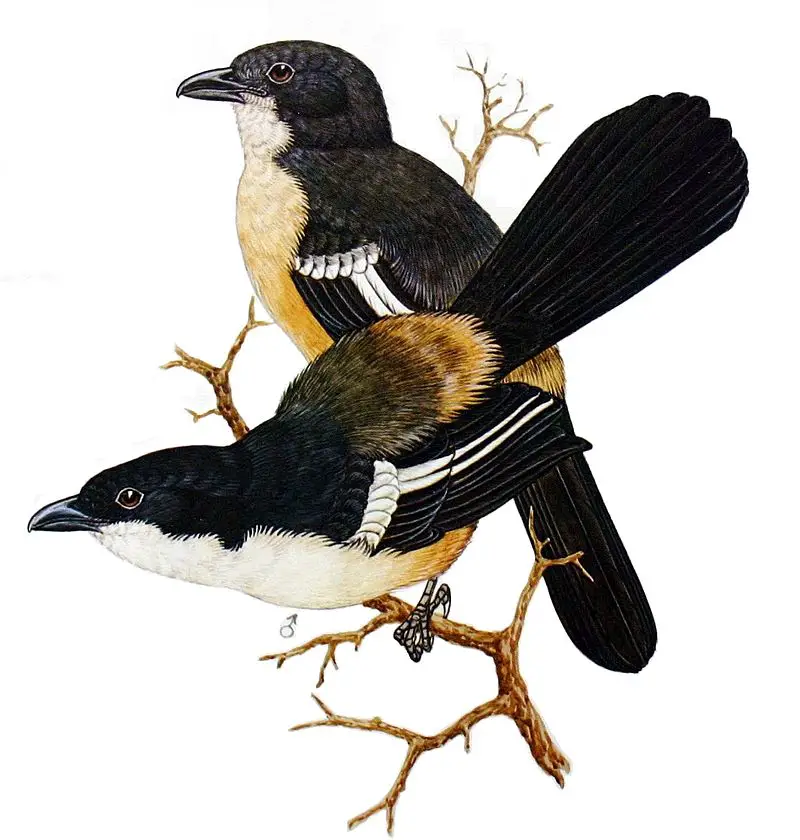
The Southern boubou, also known as Laniarius ferrugineus, is a bushshrike bird found in southeastern Africa. Its name means rust-colored, and it has distinct reddish-brown plumage.
Although it was once classified with true shrikes, it is not closely related to them. The bird mainly inhabits areas in southeastern Zimbabwe, eastern Botswana, Mozambique, and southern and eastern South Africa.
It frequents savannahs and shrublands, where it feeds on insects, small reptiles, and fruits. The Southern boubou has a melodious and varied song, which it uses to establish territory and attract mates.
Additionally, it is a common sight in urban gardens and parks due to its adaptability and attraction to fruiting trees.
Overall, the Southern boubou is a fascinating bird species that thrives in a variety of habitats across southeastern Africa.Scientific classification:
| Kingdom | Animalia |
| Phylum | Chordata |
| Class | Aves |
| Order | Passeriformes |
| Family | Malaconotidae |
| Genus | Laniarius |
| Species | L. ferrugineus |